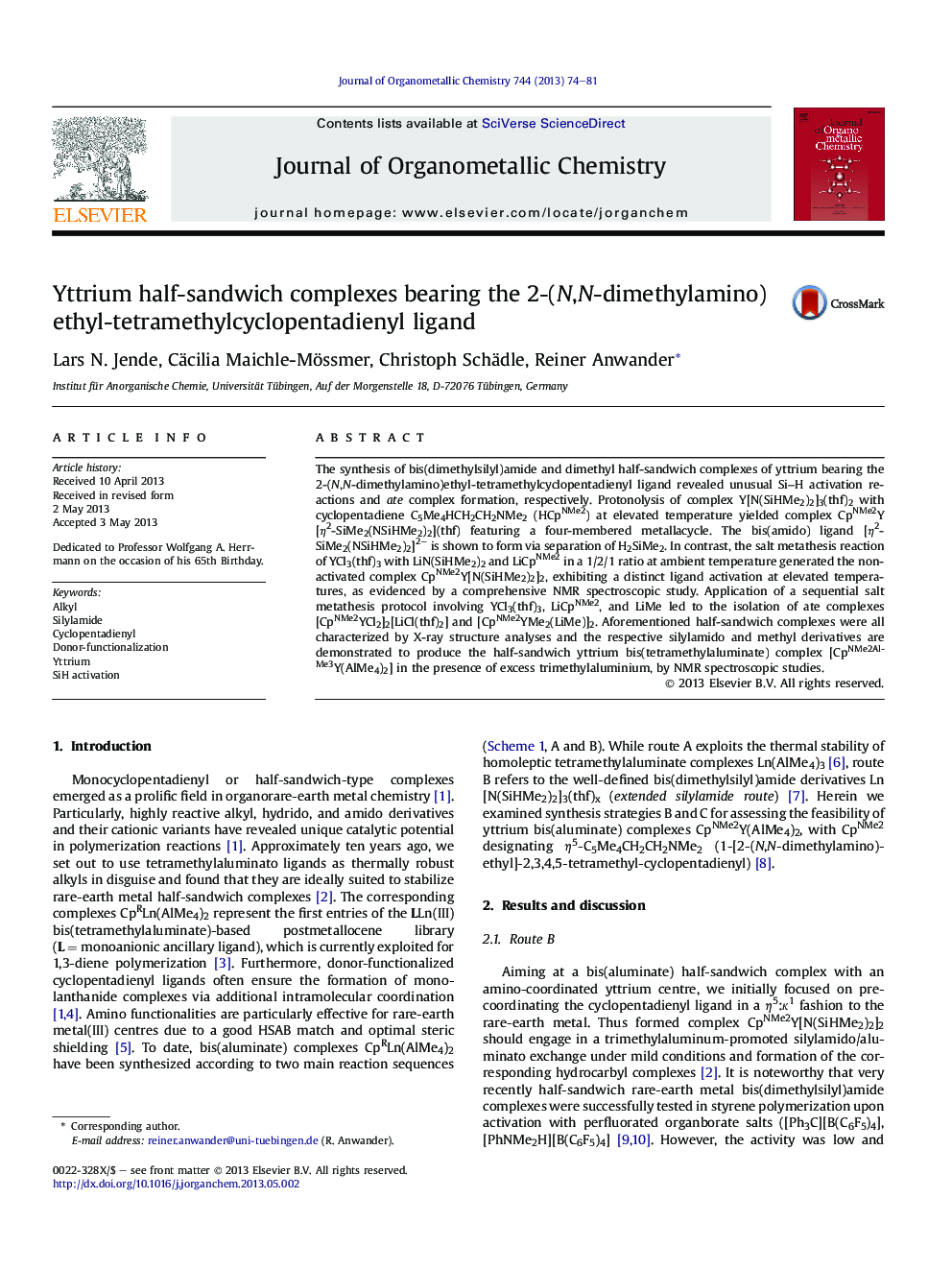| Article ID | Journal | Published Year | Pages | File Type |
|---|---|---|---|---|
| 1324392 | Journal of Organometallic Chemistry | 2013 | 8 Pages |
•The cyclopentadienyl ligand C5Me4HCH2CH2NMe2 (HCpNMe2) is used for rare-earth metals.•Halfsandwich complex (CpNMe2)Y[N(SiHMe2)2]2 is obtained without an external donor.•Distinct SiH and CH bond activation reactions are observed at elevated temperatures.•[(CpNMe2)YMe2(MeLi)]2 is a rare example of a rare-earth metal half-sandwich dimethyl complex.
The synthesis of bis(dimethylsilyl)amide and dimethyl half-sandwich complexes of yttrium bearing the 2-(N,N-dimethylamino)ethyl-tetramethylcyclopentadienyl ligand revealed unusual Si‒H activation reactions and ate complex formation, respectively. Protonolysis of complex Y[N(SiHMe2)2]3(thf)2 with cyclopentadiene C5Me4HCH2CH2NMe2 (HCpNMe2) at elevated temperature yielded complex CpNMe2Y[η2-SiMe2(NSiHMe2)2](thf) featuring a four-membered metallacycle. The bis(amido) ligand [η2-SiMe2(NSiHMe2)2]2− is shown to form via separation of H2SiMe2. In contrast, the salt metathesis reaction of YCl3(thf)3 with LiN(SiHMe2)2 and LiCpNMe2 in a 1/2/1 ratio at ambient temperature generated the non-activated complex CpNMe2Y[N(SiHMe2)2]2, exhibiting a distinct ligand activation at elevated temperatures, as evidenced by a comprehensive NMR spectroscopic study. Application of a sequential salt metathesis protocol involving YCl3(thf)3, LiCpNMe2, and LiMe led to the isolation of ate complexes [CpNMe2YCl2]2[LiCl(thf)2] and [CpNMe2YMe2(LiMe)]2. Aforementioned half-sandwich complexes were all characterized by X-ray structure analyses and the respective silylamido and methyl derivatives are demonstrated to produce the half-sandwich yttrium bis(tetramethylaluminate) complex [CpNMe2AlMe3Y(AlMe4)2] in the presence of excess trimethylaluminium, by NMR spectroscopic studies.
Graphical abstractThe synthesis of bis(dimethylsilyl)amide and dimethyl half-sandwich complexes of yttrium bearing the 2-(N,N-dimethylamino)ethyl-tetramethylcyclopentadienyl ligand revealed unusual Si–H activation reactions and ate complex formation, respectively, as evidenced by the solid-state structures of CpNMe2Y[η2SiMe2(NSiHMe2)2](thf) and [CpNMe2YMe2(LiMe)]2. Figure optionsDownload full-size imageDownload as PowerPoint slide
